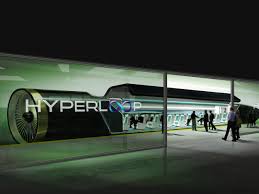
Breaking News
 Tchaikovsky's Swan Lake Just Played On Russia's Doomsday Shortwave Radio Station
Tchaikovsky's Swan Lake Just Played On Russia's Doomsday Shortwave Radio Station
 Michael 'Big Short' Burry Reveals He "Is Not Short" Tesla
Michael 'Big Short' Burry Reveals He "Is Not Short" Tesla
 Why Disney Can No Longer Make Fairy Tales
Why Disney Can No Longer Make Fairy Tales
 Man Achieves American Dream Of Working Hard And Paying Taxes For 50 Years So He Can Fund...
Man Achieves American Dream Of Working Hard And Paying Taxes For 50 Years So He Can Fund...
Top Tech News
 Laser weapons go mobile on US Army small vehicles
Laser weapons go mobile on US Army small vehicles
 EngineAI T800: Born to Disrupt! #EngineAI #robotics #newtechnology #newproduct
EngineAI T800: Born to Disrupt! #EngineAI #robotics #newtechnology #newproduct
 This Silicon Anode Breakthrough Could Mark A Turning Point For EV Batteries [Update]
This Silicon Anode Breakthrough Could Mark A Turning Point For EV Batteries [Update]
 Travel gadget promises to dry and iron your clothes – totally hands-free
Travel gadget promises to dry and iron your clothes – totally hands-free
 Perfect Aircrete, Kitchen Ingredients.
Perfect Aircrete, Kitchen Ingredients.
 Futuristic pixel-raising display lets you feel what's onscreen
Futuristic pixel-raising display lets you feel what's onscreen
 Cutting-Edge Facility Generates Pure Water and Hydrogen Fuel from Seawater for Mere Pennies
Cutting-Edge Facility Generates Pure Water and Hydrogen Fuel from Seawater for Mere Pennies
 This tiny dev board is packed with features for ambitious makers
This tiny dev board is packed with features for ambitious makers
 Scientists Discover Gel to Regrow Tooth Enamel
Scientists Discover Gel to Regrow Tooth Enamel
 Vitamin C and Dandelion Root Killing Cancer Cells -- as Former CDC Director Calls for COVID-19...
Vitamin C and Dandelion Root Killing Cancer Cells -- as Former CDC Director Calls for COVID-19...
A Pod Races Through the Hyperloop for the First Time Ever

The future sounds a bit like a witch crying over a dead cat. That spooky wail is the sound hyperloop makes—at least, the version of the high-speed transportation system designed by Hyperloop One, which just took a big stride toward the day it flings you between cities in near-vacuum tubes.
The Los Angeles company leading the race to fulfill Elon Musk's dream of tubular transit tested its pod for the first time last weekend. That pod is 28 feet long and made of aluminum and carbon fiber. It looks a bit like a bus with a beak.
A fast bus with a beak. Once loaded into a 1,600-foot long concrete tube in the Nevada desert, the pod hit 192 mph in about 5 seconds, using an electric propulsion system producing more than 3,000 horsepower. As the pod accelerated through the tube 11 feet in diameter, the 16 wheels retracted as magnetic levitation took over. Mag-lev—used by high-speed trains in Japan and elsewhere—reduces drag, and the energy required to achieve near-supersonic speeds. It helps, too, that Hyperloop One's engineers also pumped nearly all the air out of the tube, reducing air pressure to what you'd experience at an altitude of 200,000 feet.
"This is the dawn of the age of commercialization for the hyperloop," says Shervin Pishevar, Hyperloop One's executive chairman and co-founder.
It's a big step to be sure, but just one of many in the long journey ahead. The weekend test provided a nice proof of concept, but the challenge is not making hyperloop work, but making it practical. For hyperloop to truly take off, it must operate cheaply enough to lure customers away from air travel or high-speed rail. And then there's the problem of loading people or, more likely, cargo without ruining that near-vacuum state, designing and building stations, getting an endless list of public agencies and players to agree to build the thing, and so on.



